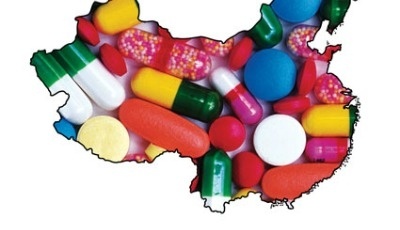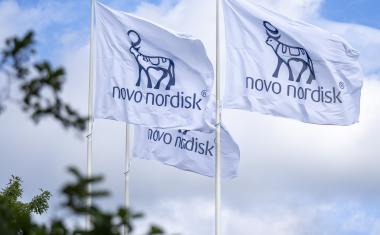Chinese Chemical Industry Trends



Chinese Overview - Throughout the year 2011, we covered several aspects of the chemical industry in China, ranging from R&D cooperation to strategy development and the tendency of multinationals to localize their China activities. We also specifically looked at the situation in specialty chemicals.
It seems fitting to finalize this series with a general overview of current trends in the Chinese chemical industry. We will describe trends in the production of chemicals, in the market for chemicals and in the way companies adapt their strategies to the changes in China (fig. 1).
Trends in the Production of Chemicals
One of the most striking trends in China is the continued buildup of capacity even for those products for which capacity utilization is already quite low. PVC is a good example for this phenomenon. In 2010, there were approximately 20 domestic projects leading to growth of PVC capacity (either setup of new lines or expansion of existing lines).
Given that domestic consumption increased by 17% from 2009 to 2010 and that China imported substantial amounts of PVC, this expansion at first glance seems to make some sense. However, capacity utilization in 2010 was only around 50%, severely limiting the prospects of the new capacity coming onstream. And China's antidumping tariffs on PVC coming from selected countries shows that the domestic industry may simply not be sufficiently competitive. The overall situation is quite similar for methanol while for other chemicals such as aniline, capacity utilization is far below 50%.
With regard to production technology, China is striving for upgrades. In titanium dioxide, this means that local Chinese producers shift from the low-end anatase varieties to the higher-end rutile varieties. At the same time, China is also looking at technologies not fully established elsewhere and trying to gain technology leadership. The most prominent example is the rise in coal chemical projects.
Environmental protection is becoming increasingly important in the production of chemicals - particularly as the government has to cope with protests from the emerging middle class, which have occasionally been directed at chemical factories such as a planned PX plant in Xiamen.
This trend is particularly strong in the more developed regions in China's east, where more and more chemical production is shifted to dedicated chemical parks.
At the same time, production capacity is shifted to Western and Central China.
While the weaker environmental regulation in these poorer areas is one reason, another is the government promotion of more evenly spread nationwide development. Currently, Chongqing in central China is such a focal point of investment, with BASF followed by other multinationals in setting up production.
Trends in the Market for Chemicals
Domestic overcapacity has led to severe price pressure for some chemical products in China, such as polysilicone. This will lead to further reduction of investment in this area and has also led to government restrictions with regard to buildup of new capacity. For other chemicals, price pressure comes from cheap imported materials. Antidumping rulings are an indication of such price pressure. Though the number of antidumping cases has been slightly declining, it is still relevant for several important chemicals such as methanol, chloroform, butandiol and phenol.
Exports will increasingly have a positive effect on the Chinese chemical industry. Several producers of bulk chemicals such as acetic acid, but also of more special type materials (e.g., in water treatment) have already done substantial efforts to achieve Reach registration in order to open up the European market.
Strengthening export segments for Chinese producers include areas such as pesticides, which increased by about 20% from 2009 to 2010. Feed additives and vitamins are other well-known segments with strong Chinese exports. For some chemicals such as vanillin, exports probably account for around 80% of Chinese production, and this figure may rise further.
Perhaps the most important trend in the Chinese chemicals market refers less to the type and more the quality of chemical products produced. Indeed the quality of many basic chemicals such as MDI has now achieved global standards, while in other areas such as specialty and high-end chemicals there still is room for improvement.
Indeed, as described elsewhere, the competition between domestic and multinational chemical companies will largely take place in the growing mid-level segment of the chemicals market. This market is targeted by domestic companies from below - which mainly required improving the quality of their products - as well as from the top by multinationals - which requires the adaptation of global products to domestic cost structures.
The underlying reason for the shift towards higher quality is the growth of the Chinese middle class. Apart from this general shift, the more consumption-oriented middle class will also have specific effects on the growth of individual chemical segments. Chemicals used in the production of small and large consumer goods, such as pigments for cosmetics or plastics for cars, will have a higher growth rate than purely investment-driven chemicals.
Reactions of Domestic Chemical Companies
Domestic Chinese chemical companies are aware of the trends in their environment and adapt their business activities to them. While in the Western world chemical companies have already for a long time moved from commodities to specialties, this trend is still in the earlier stages in China.
A leading player is ChemChina, a company trying to establish itself as a domestic leader in specialty chemicals. Other major companies such as Sinochem so far have only made minor moves in this direction, even though it seems from discussions with their management that the need for such a development is recognized. However, for every example of a Chinese chemical company expanding into specialties, another example of a specialty company looking for upstream integration into raw materials can be found. Therefore this trend will progress quite slowly.
A clear trend has been for major petrochemical companies to secure raw materials supply abroad. Pushed by the Chinese government, Sinopec, CNOOC and Petrochina all will continue to acquire gas and oil resources outside of China.
A related move is to invest in coal-to-chemicals processes as domestic chemical companies see coal as a more reliably available source than crude. However, it is unlikely that the current boom in these projects will continue as China's coal reserves are not unlimited.
In contrast to securing raw materials, there have so far only been surprisingly few acquisitions with the goal of improving market and technologies, such as the Sinochem JV with DSM in anti-infectives or the acquisition of Makhteshim Agan by ChemChina. Many more of these deals will happen if Chinese specialty chemicals companies truly want to become global players.
A final trend among domestic companies is to cooperate or even to consolidate operations. This is partly due to the fragmented nature of many markets. However, more and more it is also active government policy to promote consolidation. One of the tools is to establish minimum capacities for newly established production of many chemicals, another to tighten environmental regulation.
So What Is Really Different from the Rest of the World?
Whenever discussing trends in the chemical industry, similar buzz¬words tend to come up. Commoditization, consolidation, globalization, innovation, sustainability, etc.
All these issues are also relevant for China. The key difference compared to Western countries is the larger role the government plays in these developments. It is much more active - though not necessarily more successful - in steering production capacities, merging companies, creating domestic champions and promoting innovation.
Only with regard to environmental aspects, its role is roughly similar to that of Western governments. This big difference will also shape all chemical industry trends in China, and give them distinctly Chinese characteristics.
Company
Managm. Consult. ChemicalsRM1302, 13/F CRE Bldg.
Wanchai, Hong Kong
China
most read

Novo Nordisk to Cut 9,000 Jobs Globally in Major Restructuring
Novo Nordisk announced a global workforce reduction of approximately 9,000 positions to streamline operations and reinvest DKK 8 billion (€1 billion) in growth opportunities for diabetes and obesity treatments.

VCI Welcomes US-EU Customs Deal
The German Chemical Industry Association (VCI) welcomes the fact that Ursula von der Leyen, President of the European Commission, and US President Donald Trump have averted the danger of a trade war for the time being.

Ratcliffe: Chemical Industry in Europe at a Tipping Point
Ineos CEO Ineos calls on European politicians to save the chemical industry.

Merck Acquires Chromatography Business from JSR Life Sciences
Merck to acquire the chromatography business of JSR Life Sciences, a leading provider of CDMO services, preclinical and translational clinical research, and bioprocessing solutions.

BASF Sells Majority Stake in Coatings Business
BASF sells a majority stake in its coatings business to the investor Carlyle.











